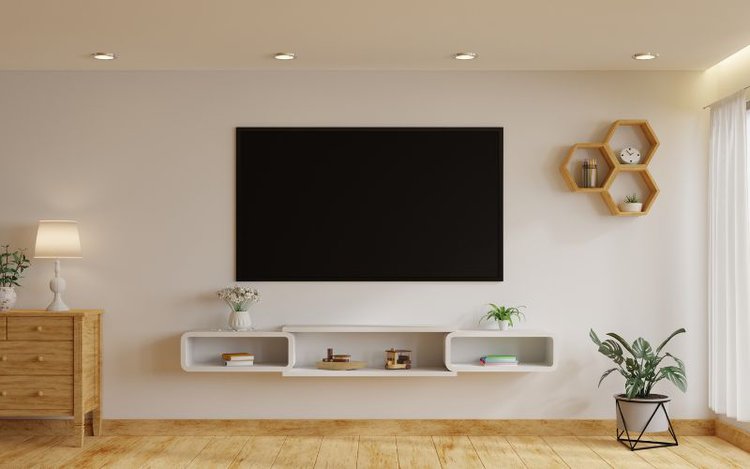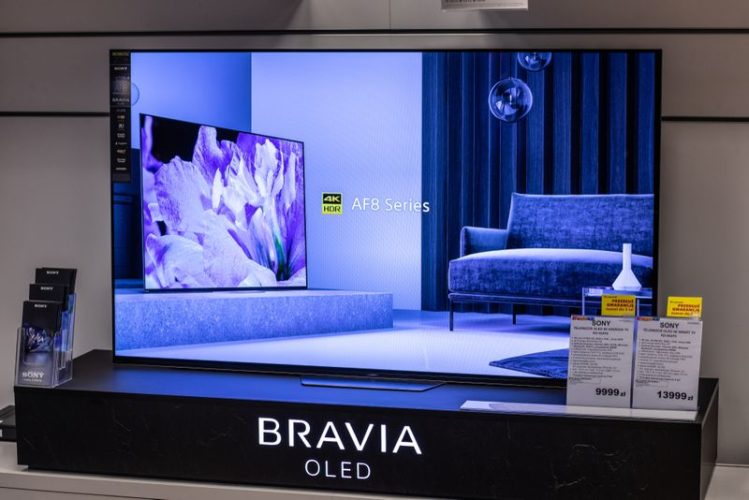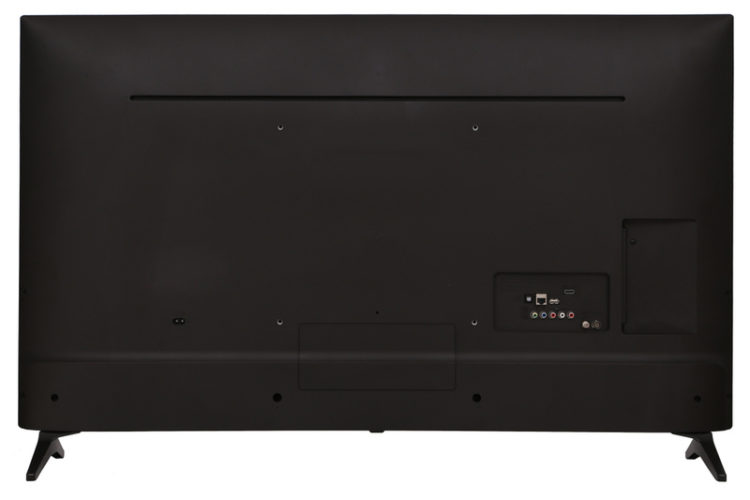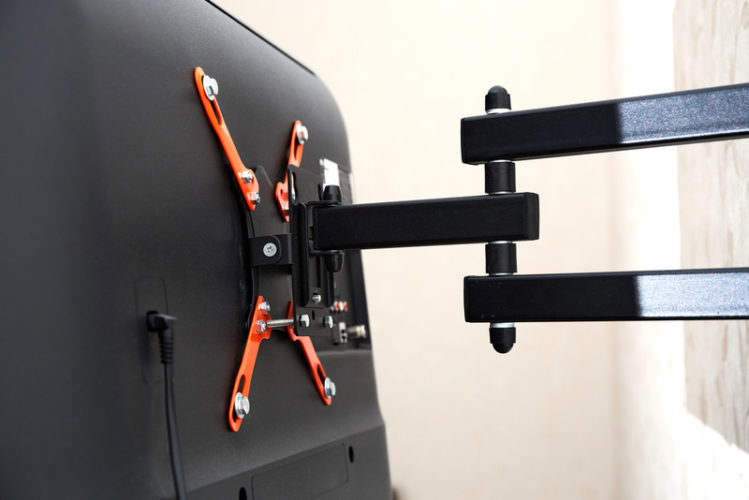Tips: How Do I Know if My TV Is VESA Compatible?

What To Know
- The user manual often lists the VESA size, and the packaging might display a VESA Compliant logo. If the manual is lost, an e-copy might be available on the manufacturer’s website.
- Manually measure the distance between the four mounting holes on the back of the TV, both horizontally and vertically (in millimeters), to determine the VESA size (e.g., 400mm x 200mm is VESA 400×200).
- TVs made by companies that are part of VESA (such as Sony, Samsung, LG, Lenovo, Apple Inc., ViewSonic, Panasonic, Hisense, and Vizio) are likely to be VESA-compatible.
Discover how to identify your TV’s VESA size and confidently select the right mounting bracket for a secure setup.
Ready to secure your screen?
Let’s explore the essentials of VESA compatibility.
Quick Navigation
How To Check if a TV is VESA Compatible
The easiest way to determine VESA compatibility is to find a TV’s mount size and then check to see if it matches any of the VESA dimensions. If it does, then your TV is VESA compatible.
You can also look out for the “VESA Mounting Compliant” logo. However, only a handful of VESA-compliant manufacturers have obtained the license to use this logo.
You can also be sure that a TV is compatible with VESA standards if it is manufactured by one of the companies that make up VESA.

The following manufacturers are part of VESA and produce VESA-compatible TVs:
- Sony
- Samsung
- LG
- Lenovo
- Apple Inc.
- ViewSonic
- Panasonic
Other VESA-compatible brands include Hisense and Vizio.
How Do I Know What VESA Size I Have?
It’s essential to know your TV’s VESA size so that you can purchase a fitting mount. There are a few ways to determine your TV’s VESA size. They include:
1. Check the specifications in the user manual
Every TV comes with a user manual which contains information concerning its specifications. The VESA size is usually included in this manual.
You may find the VESA size represented as a single digit instead of two (i.e., VESA 100). This means that the mount holes on your TV are placed squarely; their horizontal and vertical distances are equal.
If you’ve lost your manual, you may access the manufacturer’s website, search for your TV model, and download an e-copy of its user manual.
2. Measure it manually
Another alternative is to measure the mount of your TV yourself. Find the four mount holes at the back of the TV and measure the distance between them, horizontally and vertically.

First, measure the distance from the holes on the left to those on the right. And next, measure the distance from the holes on top to those below.
The horizontal length comes first. Hence, if your horizontal distance is 400mm and the vertical distance is 200mm, your VESA size will be 400×200.
NOTE: The VESA size is represented in millimeters, so make sure you convert from any other unit of length measurement.
What are The Common VESA Sizes?
There are various VESA sizes for TVs of different sizes. Below is a table representing common VESA sizes and the TV sizes they’re often found on.
| TV size (diagonal) | VESA Mount Size |
| 12 – 31″ | VESA 75 x 75
VESA 75 × 50 VESA 100 x 100 VESA 100 × 50 |
| TVs up to 32″ | VESA 200 x 100
VESA 200 x 200 VESA 300 x 200 VESA 300 x 300 |
| TVs up to 60″ | VESA 400 x 200
VESA 400 x 300 VESA 400 x 400 |
| TVs up to 70″ | VESA 600 x 400
VESA 800 x 600 |
VESA MIS Specifications

VESA sizes aren’t always represented with “VESA” preceding a bunch of figures. Your TV manufacturers may instead use the word “MIS” followed by letters to represent the VESA size.
MIS refers to the VESA Mounting Interface Standard. It is just another name for the FDMI and represents some special hole patterns.
Common MIS specifications include:
- MIS-B: This refers to the VESA 20 × 50.
- MIS-C: It is used to represent VESA 35 × 25.
- MIS-D: It represents square mount patterns for small TVs and monitors ( 75×75 or 100×100).
- MIS-E: This refers to the VESA 200×100 size.
- MIS-F: This specification represents larger square sizes from VESA 200×200 to 1000×1000. It usually includes a number showing the specific size (i.e., MIS-F 400 — which means VESA 400 × 400).
NOTE: The MIS-E and other larger mount sizes may have more than four mounting holes; they often have three horizontal holes instead of two.
Are All TVs VESA Compatible?
Not all TVs are VESA-compatible. Bulky TVs from the CRT era are not compatible with VESA mounting standards or wall mounting in general.

Also, some TV manufacturers may design their TVs’ mounting systems independent of VESA standards and use specialized mount brackets.
However, most flat-panel TVs are compatible with VESA standards. You only have to find their exact VESA size and purchase a mounting bracket with the same VESA size.
If you find that your TV isn’t VESA-compatible, you can purchase adjustable brackets like those made by the SANUS brand. They allow you to match a bracket to the position of the holes on your TV.
Conclusion
If you’re in the market for a wall mount bracket, you have to understand the VESA mount standard. It includes a range of sizes that leading electronics manufacturers established as the industry mounting standard.
Check the user manual for its mount size to determine if your TV is VESA compatible. You can also measure the distance between the mounting holes at the back of the TV to see if they match any VESA size.
VESA sizes are represented in millimeters as “horizontal × vertical” lengths. You’ll sometimes find them represented as variants of MIS, as we’ve explained in the article above.
Gabriella ‘Diogo is a technical writer with a vested interest in tech hardware and equipment. She shares her knowledge and processes in an easy-to-grasp, lighthearted style. When she’s not testing or researching device performance, you’ll find her writing short stories or rewatching episodes of her favorite sitcoms.

